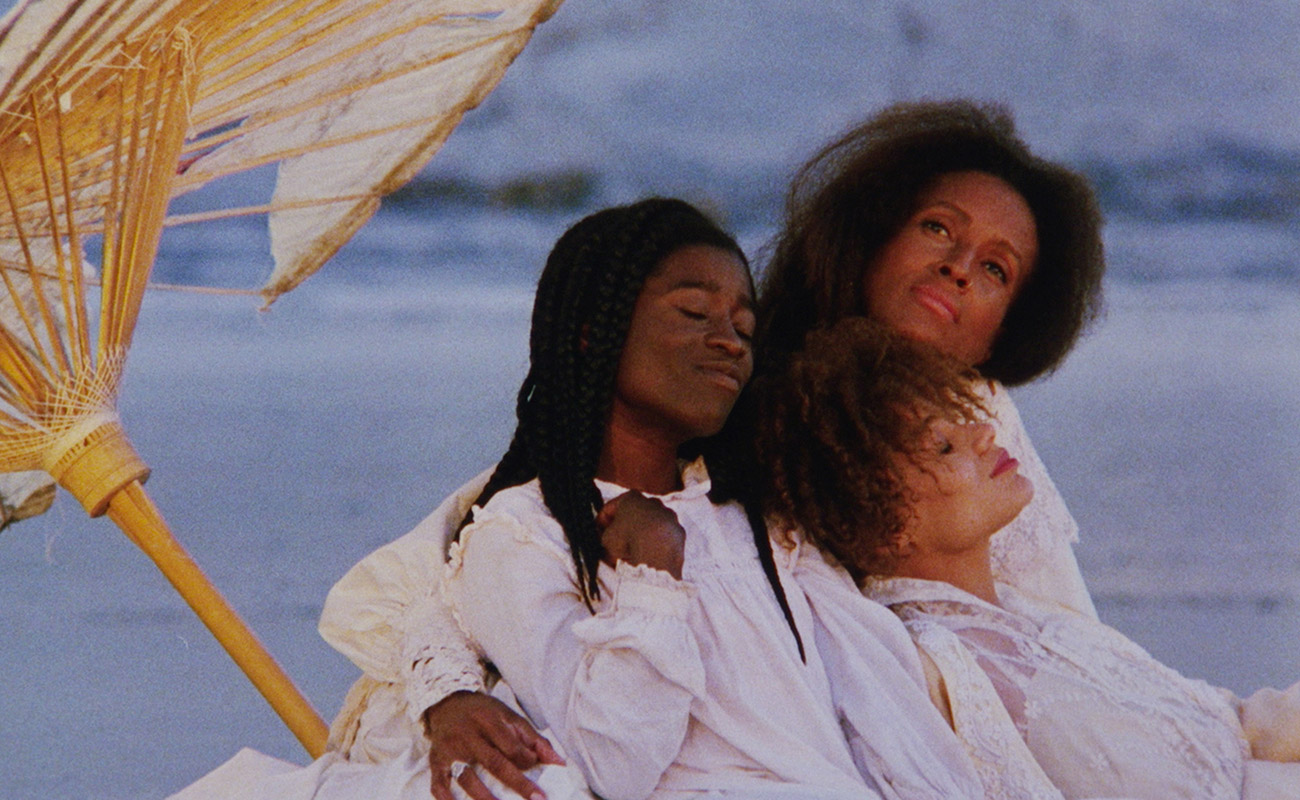
A still from Daughters of the Dust, Julia Dash’s film exploring African-American female identity.
AMONG ALL THE TALK OF Beyoncé’s Lemonade was a lot of discussion about where the music superstar and her collaborators — including music video extraordinaires Mark Romanek and Jonas Akerlund — found her inspiration for the visual album. Terrence Malick was an almost too-obvious choice for many; the dreamy, majestic visuals of the film indeed bear some surface similarity to the infamously-reclusive director’s movies, such as The Tree of Life and his Pocahontas-inspired The New World.
But the strongest influence on Lemonade was most likely that of a small — many would call it obscure — drama from the early ‘90s called Daughters of the Dust. You may not have heard of it, but if you were to watch it and Lemonade back-to-back, you would have little doubt that Bey has not only heard of it, but seen it many times and allowed its atmospherics to seep deep down into her bones.
And now, in honor of its 25th anniversary, audiences are going to get the chance to see Daughters in the Dust for what will likely be the very first time. After premiering at the 1991 Sundance Film Festival, the movie was released into theatres and made a modest amount of the money at the box office, before more or less vanishing. And while Beyoncé herself isn’t to thank, hopefully the interest in all things Lemonade will mean the movie’s re-release, courtesy of a digital restoration undertaken by the Cohen Film Collection, will inspire an all new audience to see it and succumb to its lyrical charms. (Watch the trailer here.)
It’s also a landmark film, standing as it does in history as the first feature film to be directed by an African-American woman to ever get a theatrical release.
Yes. Ever.

Compare this still from Daughters of the Dust to the still from Lemonade below.
Now, there had been others made by black – movies like Jessie Maple’s Harlem-set Will featuring Loretta Devine’s first on-screen performance, and Kathleen Collins’ Losing Ground from 1982 about a philosophy teacher in a marital crisis – but, sadly, they were relegated to festivals and went largely unnoticed by the critical establishment of the time. So, as it stands, Daughters in the Dust is the first, and now 25 years later it has been remastered and will be re-released into theatres.
It’s not just the timeliness of its parallels to Lemonade that makes this important, however. Given all the talk recently of diversity in film, it’s vital to see films such as this one in the way they were intended. This film is so beautiful to look at that the chance to see it on a big screen ought to be a cannot-miss opportunity for movie lovers everywhere. And if you don’t live in a city that is likely to screen it, a DVD release is a close second.
What’s it all about? Well, it’s a somewhat non-linear telling of a family of direct slave descendants planning to move from the Sea Islands off the coast of Georgia to the mainland north in 1902. The region was known for its geographic and cultural isolation, and the residents had preserved much of the language and culture of their African heritage. The film is noted for a very poetic style that could often leave viewers lost in terms of traditional narrative, but, at it’s core. is more about fostering an authentic and spellbinding atmosphere of a specific time and place. Significantly, both Daughters of the Dust and Lemonade are powerful yet enigmatic expressions about the plight and the power of African-American women. They’re very much focused on exploring the the ability to endure hardship with strength and dignity in the face of such overwhelming societal pressure.

I personally can’t wait for viewers to be able to get the chance to see Daughters of the Dust, many of whom will only be hearing of it for the first time in relation to Beyoncé’s chart-topping success. Director Julia Dash herself has said that she’s “excited about the restoration of Daughters of the Dust being made available to the public and delighted to have the opportunity to engage with a new generation of people who have never seen the film.” Bad news if you want to explore Dash’s world even more, though, because she never made another film — a cinematic crime that was all too common for many budding African-American directors of the time. The good news is that she wrote two books related to the movie, including a sequel set 20 years after the events of the film.
Get in formation, people, for a true cinematic landmark is coming back.



-300x169.jpg)












